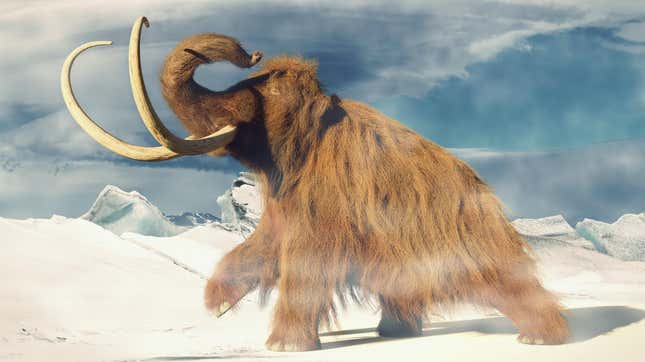Colossal Biosciences, which calls itself “the world’s first de-extinction company,” has created stem cells it thinks will hasten the company’s marquee goal of resurrecting the woolly mammoth. The team’s research describing the accomplishment will be hosted on the preprint server bioRxiv.
The cells are induced pluripotent stem cells (iPSC), a type of cell that can be reprogrammed to develop into any other type of cell. The cells are especially useful in bioengineering, for their applications in cell development, therapy, and transferring genetic information across species. Colossal’s new iPSCs are the first engineered elephant cells converted into an embryonic state, a useful development if you’re in pursuit of a woolly mammoth. Or rather, an animal that looks like a woolly mammoth.
“In the past, a multitude of attempts to generate elephant iPSCs have not been fruitful. Elephants are a very special species and we have only just begun to scratch the surface of their fundamental biology,” said Eriona Hysolli, who heads up Colossal’s biological sciences team, in a statement. “The Colossal mammoth team persisted quite successfully as this progress is invaluable for the future of elephant assisted reproductive technologies as well as advanced cellular modeling of mammoth phenotypes.”
According to the Colossal release, the new stem cells were able to differentiate into the three germ layers that result in every cell type. “It opens the door to establishing connections between genes and traits for both modern and extinct relatives—including resistance to environmental extremes and pathogens,” said George Church, a geneticist and co-founder of Colossal, in a press release.
The animals Colossal hopes to produce will be Asian elephants (E. maximus), genetically engineered to be resistant to the cold and, most notably, covered in shaggy hair à la woolly mammoth, their extinct cousin. Colossal also has plans to produce approximate (or “proxy”) species of the Tasmanian tiger or thylacine, which went extinct around 1936, and the dodo, a flightless bird native to Mauritius, which was gone by 1681. Other companies—namely Revive & Restore—have similar aims with other species, including the heath hen and passenger pigeon.
A proxy species isn’t truly the old creature brought back to life. As described in a 2016 report by the International Union for Conservation of Nature’s Species Survival Commission, “Proxy is used here to mean a substitute that would represent in some sense (e.g. phenotypically, behaviourally, ecologically) another entity – the extinct form.” The group added that “Proxy is preferred to facsimile, which implies creation of an exact copy.”
One expert who spoke to Gizmodo previously referred to the end-goals of these companies as “something out of Lovecraft” and the elephantine effort as a “simulacrum that has no phylogenetic relationship with actual mammoths.”

It’s not just a question of having biological material from an extinct animal. Researchers exploring the possibility of ‘resurrecting’ the Christmas Island rat found that some genetics were simply lost to time, in spite of the amount that could be gleaned from historic tissues and its nearest extant relatives. One member of the team told Gizmodo that “We aren’t actually planning to do it, as probably the world doesn’t need any more rats, and probably the money it would take to do the best job possible could be spent on better things, e.g., conserving living things.” (That researcher is now a member of Colossal’s advisory board.) Nevertheless, the production of elephant iPSCs is a step toward producing these proxy animals, an aim that many scientists see as likely but fewer see as useful.
Once Colossal produces a herd of proxy mammoths, its intention is to decelerate the melting of the permafrost by loosing the animals on a swath of Siberia. Ultimately, Colossal says, the mammoth steppe—the ancient ecosystem in which the giant proboscideans roamed—could be restored, helping fight climate change and pushing new technologies in gene editing in the process, helping extant elephants, which face their own survival threats.
But other technological breakthroughs will be necessary to make any of that possible. As noted by Nature, Church intends to use artificial elephant wombs to produce the proxy mammoths, so as to not require Asian elephant surrogates. Asian elephants are an endangered species; to use them as surrogates for proxy mammoths would be the cherry-on-top of an ethical dilemma sundae.
We’re still a long way off from Colossal’s ultimate goals, but this recent achievement is a significant one, and a reminder that these ‘de-extinction’ efforts involve serious science.

